Coral reefs are facing critical threats, with traditional sunscreen runoff being a contributing factor. If you’re reading this, you’re likely already aware of this issue and you want to make a conscious choice about the sunscreen that you are going to buy.
Well, If you read on, you’ll find out that there is a new development, a product so safe that it can proudly be called “THE WORLD’s ONLY proven and patented reef safe formula”. It carries the golden seal and it also Marine Positive Certified.
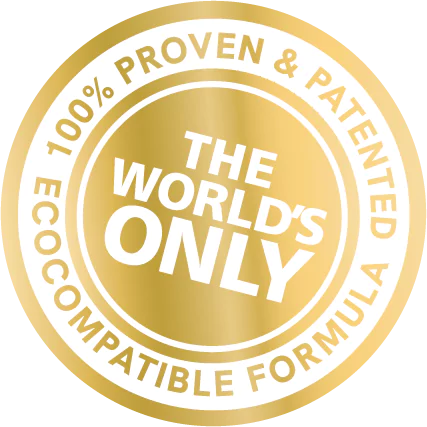
Now, we think that is pretty exciting, and the best news so far for coral reefs around the world, which are in a bad state at the moment.
By choosing proven reef safe sunscreen, you not only protect your skin from harmful UV rays but also play a crucial role in preserving our underwater ecosystems.

Just imagine how much better off marine life would be if everyone on board these yachts were to use Aethic’s proven reef safe sunscreen.
In this article, we will explore the benefits of proven reef safe sunscreen, the harmful effects of traditional sunscreens on our oceans, and provide you with a top recommendation for proven reef safe options.
Aethic has something truly unique to offer: the world’s only proven and patented reef-safe sunscreen formula. This means that they have developed a sunscreen formula that’s been specifically tested and proven to be not harmful to the marine environment and in particular to the coral reef.
They take their commitment to reef safety very seriously: Every individual ingredient in the new formula has been tested on the most vulnerable marine life, such as black sea urchins, clams. It left all of these intact. Next, their research team also tested the entire final product. And it left the marine environment in particular to the coral reef intact as well! Our Scientific proof page tells you all about it.
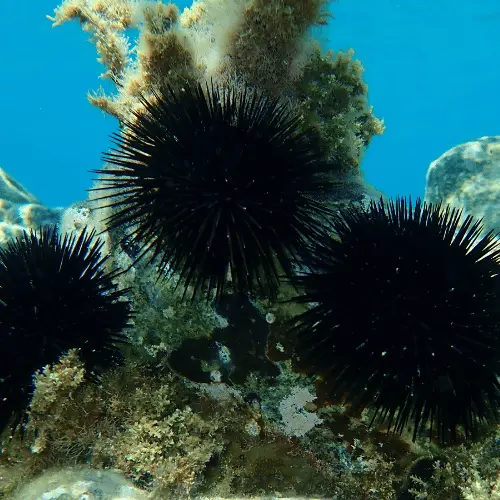
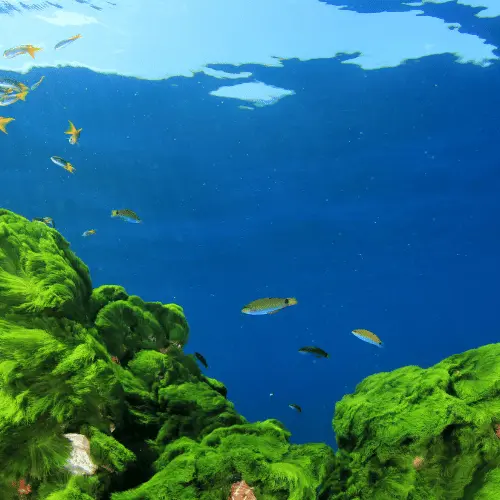
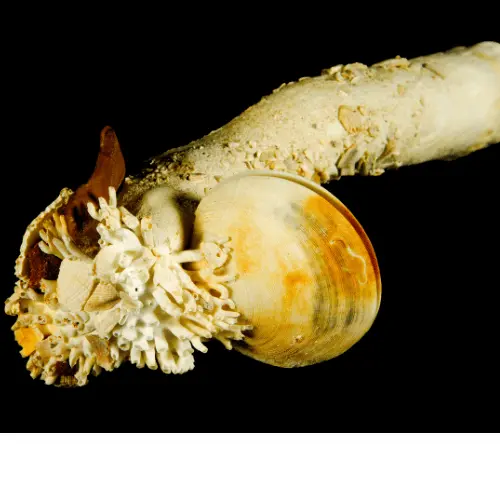
If you’re looking for a sunscreen that you can feel good about using because it protects both you and the environment, then Aethic’s sunscreen is definitely worth checking out.
Ah, now we’ve arrived at the crux of the matter, haven’t we? “Mainstream” Reef safe sunscreen refers to products that are formulated to minimize the adverse effects on coral reefs and marine life.
Unlike traditional sunscreens, which often contain chemicals like oxybenzone and octinoxate that can bleach and even kill coral reefs, reef safe sunscreens use alternative ingredients that are considered to be less harmful. However, Aethic does NOT use any harmful chemicals at all. None. Nothing. Their formula is truly reef safe and it is proven.
This is a summary of the patented reef safe formula as can be found on the patent itself.
Commercially available sunscreens comprise a variety of chemical compounds, synthetic and natural ones, all potentially harmful to the marine environment of the coral reef. The Inventors of the patented formula have surprisingly selected some substances that, both alone and in combination among them, cause no harm in this type of marine environment, but concomitantly are highly effective in screening the skin from solar radiations.
Therefore, object of the present invention is an eco-compatible sunscreen composition according to the claim.

We have simplified the scientific data and explanations from the patent into clear, jargon-free chapters.
The researchers studied coral reefs in Bunaken National Park, Indonesia. This park is famous for its incredible coral and is located in the heart of the Coral Triangle, a hotspot for marine life. The Coral Triangle is home to an amazing 605 species of coral, and Bunaken National Park itself has over 390!
That’s a huge variety of colorful coral reefs teeming with life. Different types of coral live in different parts of the reef, depending on how deep the water is, how steep the seabed is, and how much sunlight hits it.
The researchers were particularly interested in a type of coral called Acropora. There are many Acropora corals in Bunaken, and they’re super important for keeping the whole reef healthy.
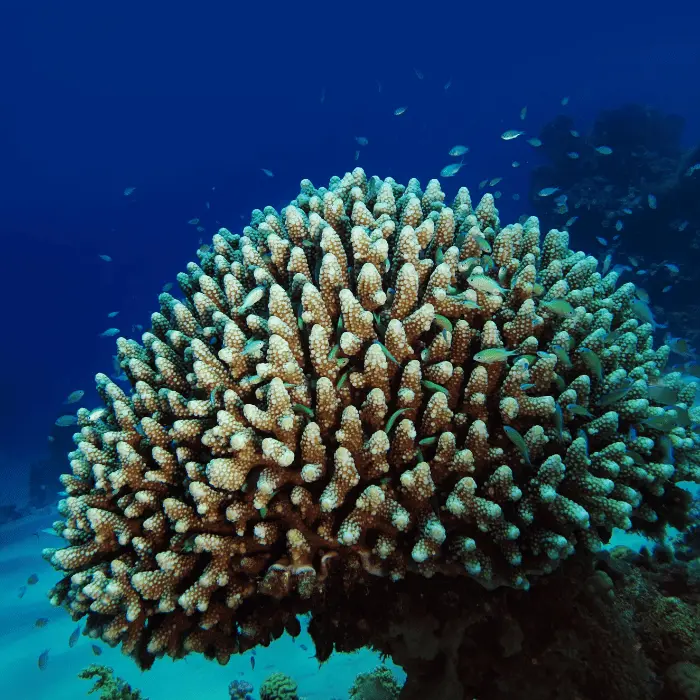
Scientists tested the effects of different sunscreen ingredients on tiny coral branches (about the size of your thumb). They took these coral samples, each with thousands of tiny polyps, from a healthy reef at about 10 feet deep.
They carefully cleaned the samples and placed them in jars of filtered seawater. In total, they set up 27 jars, each with different sunscreen ingredients or no ingredient at all (control). They kept these jars for 3 days under similar light and temperature conditions as the real reef.
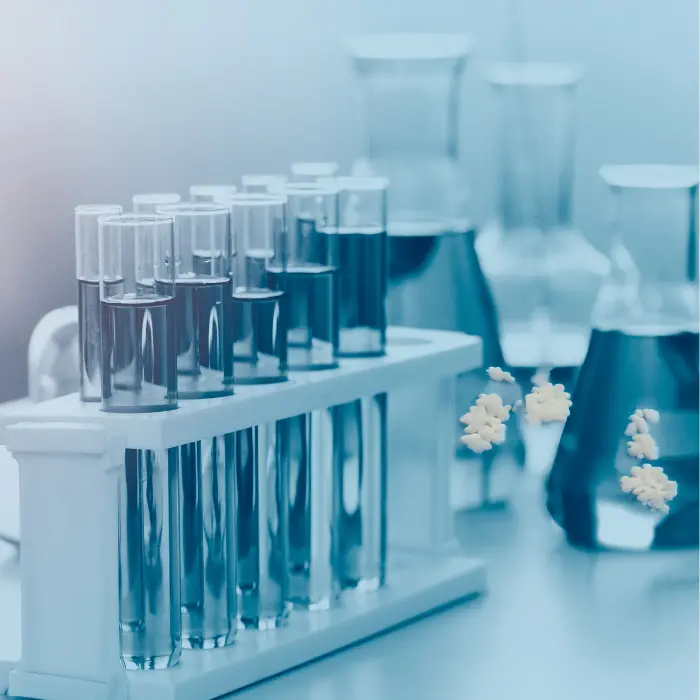
Scientists used 2 types of control groups to compare their sunscreen ingredients:
1. Checking for Virus and Bacteria Growth:

2 .Counting Coral Algae:
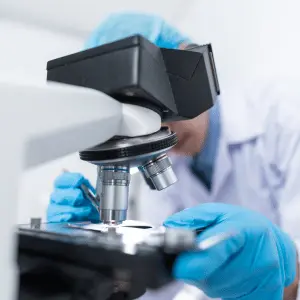
3. Measuring Coral Bleaching:

To identify reef safe ingredients for the new proven eco compatible, reef safe sunscreen formula, small coral pieces (nubbins) were incubated in controlled environments (microcosms- or tanks). They contained known concentrations of various ingredients commonly used in many /most mainstream sunscreens. This research aimed to differentiate between potentially harmful ingredients and those suitable for our reef safe formula.
Here’s a breakdown of the key findings from the coral experiment on ingredients not used in our new, eco friendly reef safe sunscreen.
Virus and Bacteria Levels:
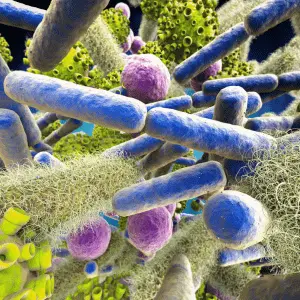
Coral Algae:

Coral Bleaching:

.
Subsequent to this verification process, the research continued to optimize the effectiveness and safety of the reef safe sunscreen formula.
This information helps the scientists develop a sunscreen that is safe to coral reefs.
____
The sunscreen ingredients seemed to break down very little when exposed to ultraviolet light, suggesting they might be stable in sunlight.
The researchers considered 4 factors to choose the most environmentally friendly sunscreen ingredients
Armed with all this valuable information, the scientists set out to develop a new formula, safe for marine life, especially coral.
Here’s a breakdown of the key points:
To give you a better idea of the work, here’s an example table listing microcosms, treatment types, concentrations of compounds used and incubation times.

“The more you learn about the oceans, the more you realise how little you know”
Jacques Cousteau
By understanding the environmental impact of traditional sunscreens, we can take steps to protect our precious marine ecosystems. We have all seen the detrimental effects of these chemicals on coral reefs. The importance of choosing proven reef safe sunscreens to mitigate their damage is quite straightforward.
An interesting fact is that a very large Giant in the sunscreen industry tried to undermine the patent claims for nine long years, wanting to develop it for themselves. But justice prevailed, and Aethic has upheld its patent rights, making them the sole owner in the world of this precious formula.
The widespread use of traditional sunscreens has had a significant impact on our coral reefs. Chemicals such as oxybenzone and octinoxate, commonly found in many commercial sunscreens, have been proven to cause coral bleaching and even death. These chemicals not only harm the coral reefs themselves but also disrupt the delicate balance of the marine ecosystem. Other chemicals like Titanium Dioxide and Zinc oxide are the subject of some very heated debates,

There is a lot of controversy going on about these minerals. Zinc oxide and titanium dioxide are known photocatalysts, meaning that the substances can form free radicals as soon as they come into contact with sunlight. And those free radicals can damage your cells and DNA, most definitely if you have an insufficient amount of antioxidants in your skin to eliminate them. If you want to read more about this subject, you can find that here.
Aqua
Cera Alba (beeswax)
Caprylic/Capric (triglyceride derived from coconut oil and glycerine- an excellent emollient and skin replenishing ingredient)
Olea Europaea Fruit oil (The fixed oil from the ripe fruit of the olive, Olea europaea l., in the family Oleaceae, is known as Olea Europaea fruit oil or simply Olive oil.)
Methylene Bis-Benzotriazolyl Tetramethylbutylphenol (nano) (synthetic broad-spectrum UV filter that helps defend skin against UVA and UVB rays with peak protection at 305 nm within the UVB range and 360 nm within the UVA range. In this regard, it can also be considered an anti-aging ingredient as it helps prevent accelerated signs of aging triggered by sun exposure)
Diethylamino Hydroxybenzoyl Hexyl Benzoate (synthetic sunscreen agent that helps shield skin against UVA rays with peak absorption at 354 nm (the UVA range extends to 400 nm). It is an approved UV filter in many markets, including the European Union, China, Australia, and Japan at a 10% maximum concentration.)
Ethylhexyl Triazone (Organic sunscreen or Chemical Sunscreen that can block UVB light, wavelength range 290-330nm, can work well with other sunscreens. And highly stable under sunlight)
Potassium Sorbate (Potassium sorbate is a preservative found in food, skin care, cosmetics, and personal care products. It is the potassium salt of a naturally occurring compound known as sorbic acid. This ingredient kills microorganisms and prevents the growth of bacteria, fungi, and mold.)
Hydroxyethylcellulose ( A water soluble, white powder often used as a stabiliser and thickener in products like creams, lotions and shampoos. Hydroxyethyl cellulose is produced from natural cellulose which is sourced from cotton)
Tocopheryl acetate ( A form of vitamin E, potent antioxidant, prolongs the life of skincare products by preventing peroxide formation)
Tocopherol ( A common form of vitamin E used in makeup and skin care products for its antioxidant benefit)
Sorbic Acid ( A preservative that can be naturally derived and is used both in cosmetics and foods)
Sodium Hydroxide ( an odorless, white crystalline solid that absorbs moisture from the air. Sometimes called caustic soda or lye)
Lavandula Hybrida Abrialis Oil ( the essential oil obtained from the flowers of Lavender)
Parfum
Limonene (a naturally occurring compound found mainly in the skin of certain plants and fruits, including lemons and oranges)
Linalool ( an aromatic chemical, usually appearing as a clear liquid, present naturally in many flowers, fruits and spice plants)
Edta ( A molecule called a chelating agent. A chelating agent is a claw-like substance that can grab and stick to other molecules)
If you are interested in what certain ingredients can do to your skin and what they are made of, you can visit this page.
______
Coral reefs, known as the “rainforests of the sea,” are home to a diverse range of marine life. They provide shelter, breeding grounds, and a source of food for countless species. However, the toxic chemicals in traditional sunscreens can enter the water when we swim or through wastewater runoff, leading to the destruction of coral reefs and the loss of habitat for marine organisms. This environmental damage has far-reaching consequences, affecting not only the marine life but also the livelihoods of those who rely on the oceans for tourism and fishing.
To combat this issue, it is crucial to understand the impact of traditional sunscreens and make informed choices when it comes to protecting our skin and the environment. By opting for a proven reef safe sunscreen, we can minimize our contribution to coral reef damage and ensure the preservation of these incredible ecosystems for future generations
One of the main health benefits of using a proven reef safe sunscreen is protection against the harmful effects of UV radiation. Exposure to UV radiation from the sun can cause a range of skin problems, including sunburns, premature ageing, and an increased risk of skin cancer. Reef safe sunscreen, like any other sunscreen, forms a protective barrier on the skin that reflects or absorbs the UV rays, preventing them from penetrating the skin and causing damage. By using proven reef safe sunscreen regularly, users can reduce their risk of developing these skin problems and maintain healthier skin in the long term.
Find out more about UVA and UVB radiation and how to choose the correct SPF for your skin.

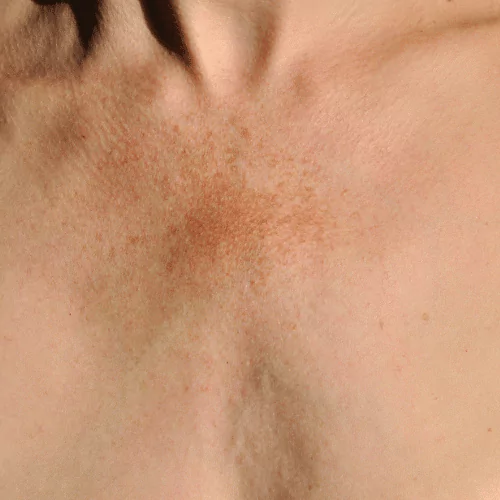
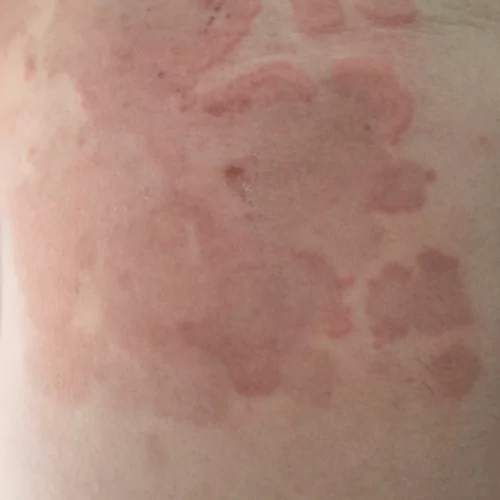
Another health benefit of proven reef safe sunscreen is its potential for reducing the risk of hormone disruption and allergic reactions. Traditional sunscreens often contain chemicals to avoid , such as oxybenzone, that have been linked to hormone disruption in humans. These chemicals can mimic or interfere with hormones in the body, leading to imbalances and potential health issues.
Proven reef safe sunscreens, on the other hand, are formulated without these harmful chemicals, making them a safer choice for individuals who are concerned about potential hormone disruption. Additionally, proven reef safe sunscreen is less likely to cause allergic reactions in sensitive individuals, as it is typically free of common allergens and irritants.
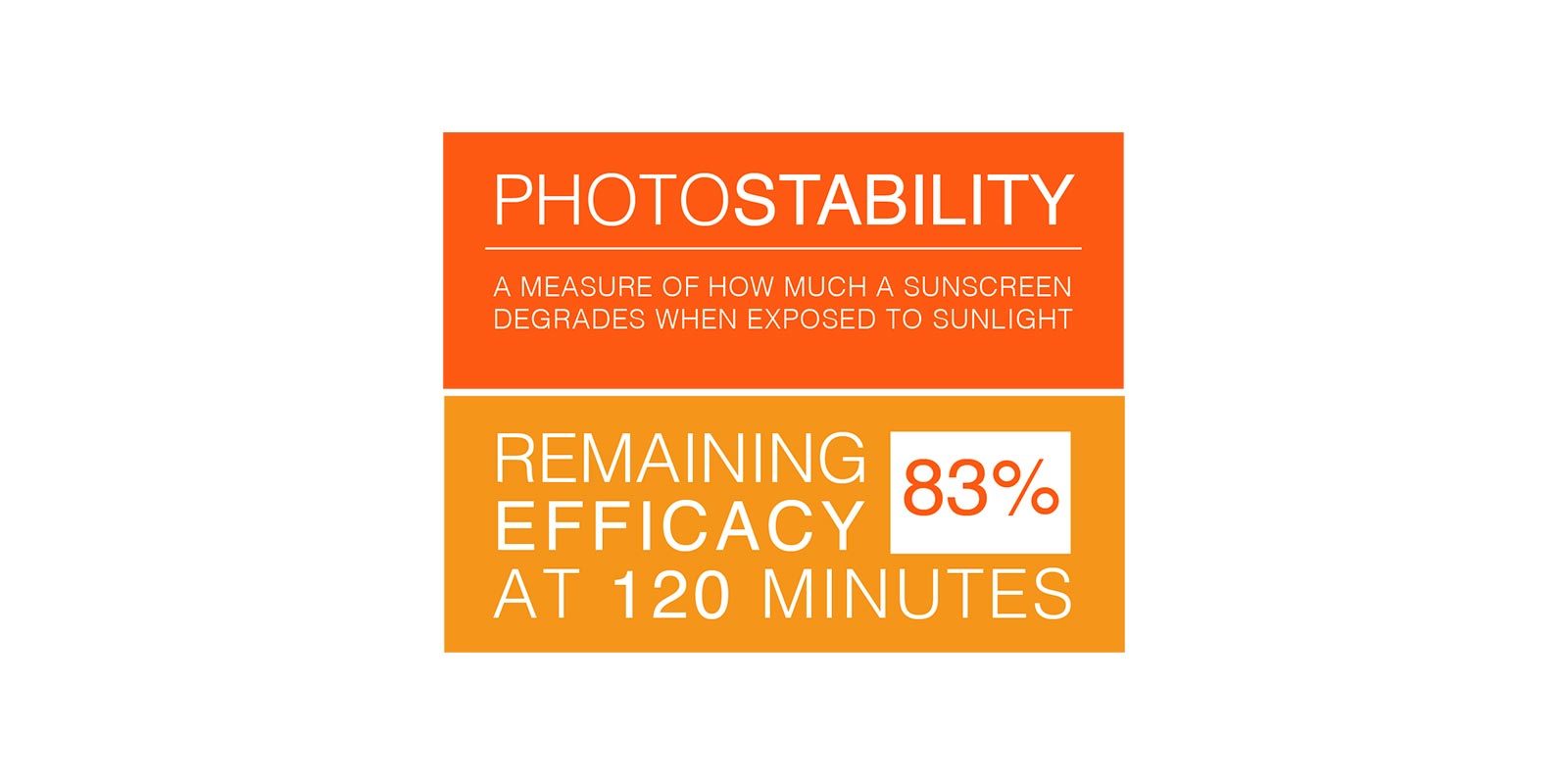
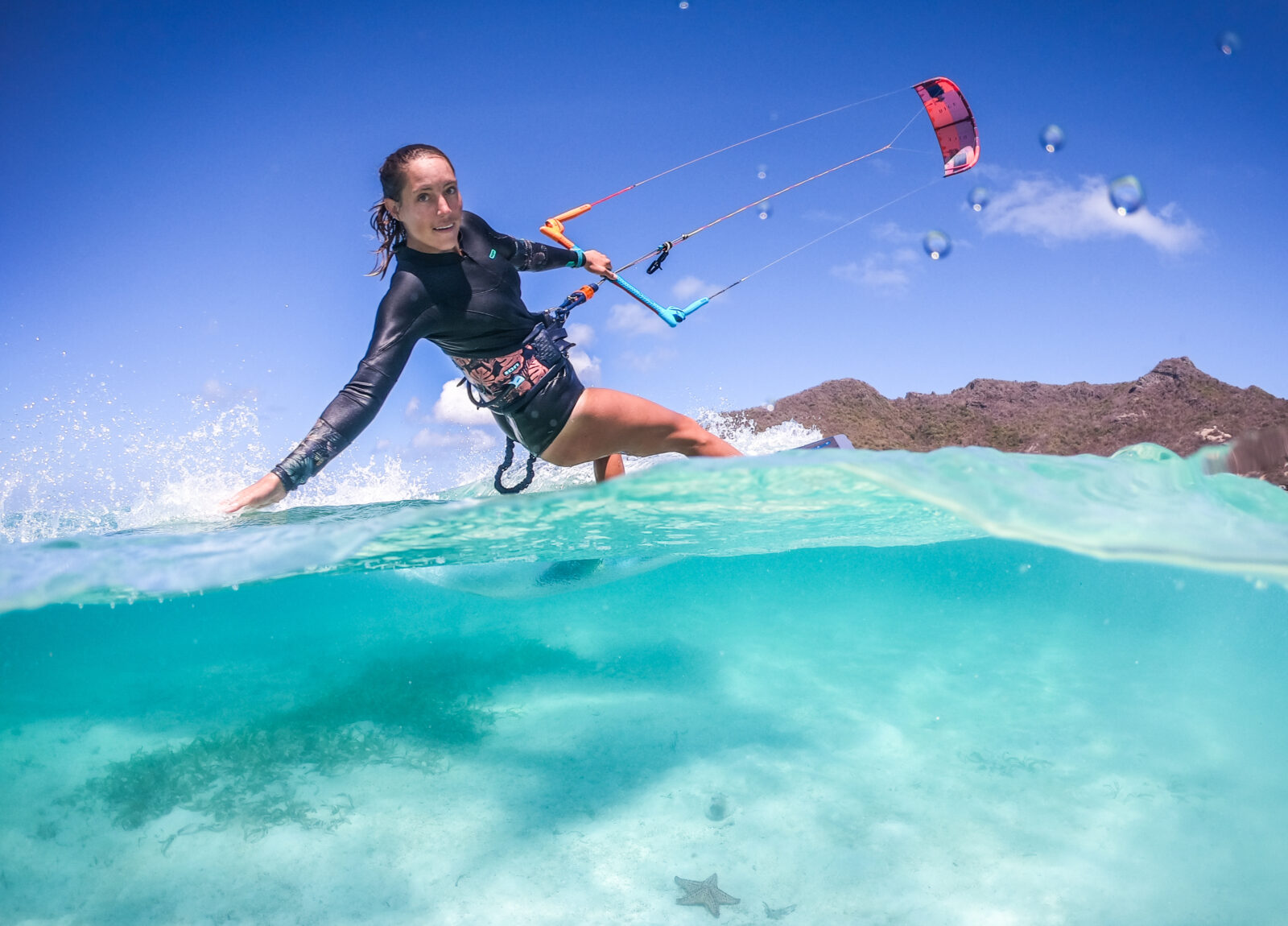
Another key feature of the proven reef safe sunscreen is its water-resistant formula. It is specifically designed to withstand water and sweat, making it perfect for outdoor activities such as swimming, hiking, or playing sports. In fact, it has been used by top water sports athletes around the world, in extreme conditions and challenging competitions.
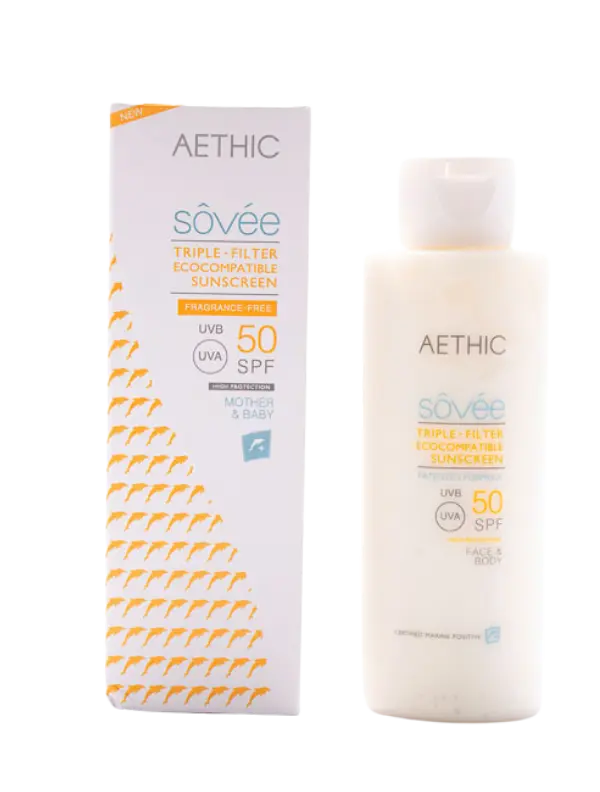
Furthermore, the proven reef safe sunscreen is dermatologically tested and suitable for all skin types, including very young sensitive children’s skin. (For babies over 2 years old Aethic recommends SPF 50 fragrance free ) It is gentle on the skin and does not cause any irritation or allergic reactions. The non-greasy formula allows for easy application and quick absorption into the skin, leaving behind a lightweight and transparent finish.
It is also safe for pregnant women.
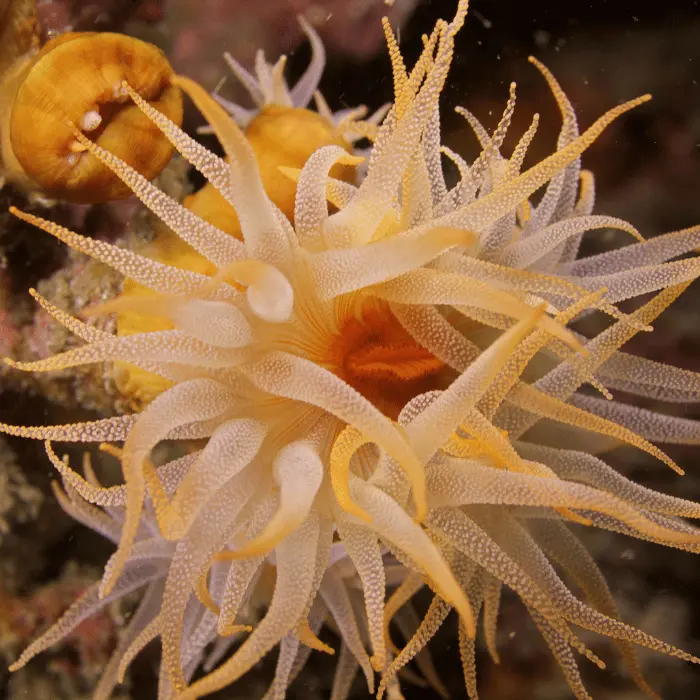
Coral reefs are like underwater metropolises teeming with a variety of interacting life forms. These intricate ecosystems are built by stony corals, tiny relatives of jellyfish that live in colonies. Each coral colony is made up of hundreds of thousands of individual polyps, essentially miniature anemone-like animals.
These polyps have a remarkable ability: they extract calcium carbonate from the seawater and use it to construct a hard, supportive skeleton. This creates the base for the entire reef structure.
Interestingly, the coral that we see is just the living top layer. Below the surface lies a massive, ancient city built from the accumulated carbonate skeletons of countless past generations of polyps. Through their slow and steady growth, these tiny creatures have constructed some of the most impressive and diverse ecosystems on Earth.
Life inside a coral reef
Polyps of reef-building corals contain microscopic algae called zooxanthellae, which exist with the animal in a symbiotic relationship. The coral polyps (animals) provide the algae (plants) a home, and in exchange the algae provide the polyps with food they generate through photosynthesis.
Because photosynthesis requires sunlight, most reef-building corals live in clear, shallow waters that are penetrated by sunlight. The algae also give a coral its color; coral polyps are actually transparent, so the color of the algae inside the polyps show through. When corals are stressed, they expel these algal symbionts through a process known as coral bleaching. Corals also face serious risk of diseases.
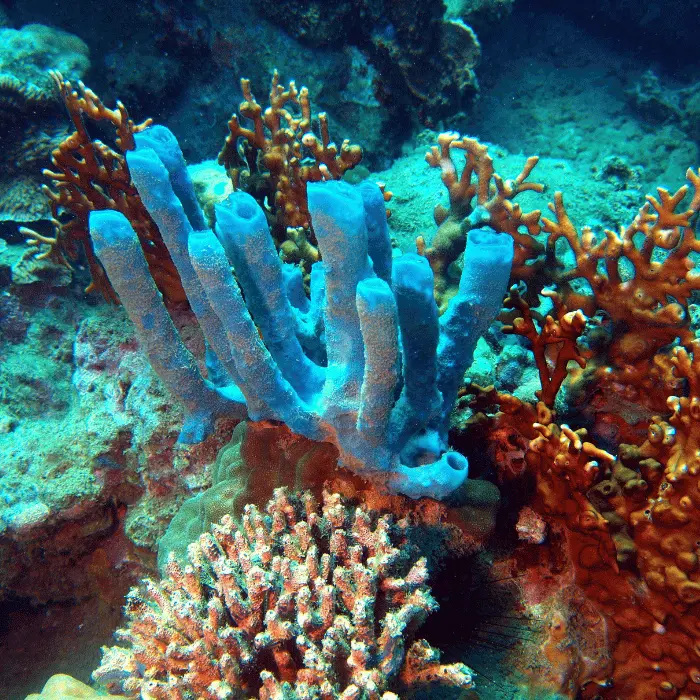
Coral reefs provide habitat for a large variety of marine life, including various sponges, oysters, clams, crabs, sea stars, sea urchins and many species of fish. Coral reefs are also linked ecologically to nearby seagrass, mangrove, and mudflat communities. One of the reasons that coral reefs are so highly valued is because they serve as a center of activity for marine life.
Establishing a certified standard for reef safe sunscreens is of paramount importance in safeguarding our fragile marine ecosystems. As we now know, traditional sunscreens often contain harmful chemicals, such as oxybenzone and octinoxate, which have been proven to contribute to coral bleaching and disrupt marine life.
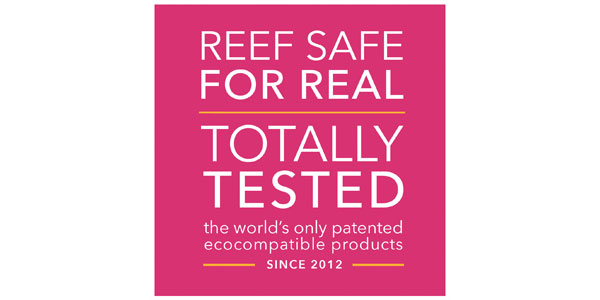
A certified standard ensures that sunscreens meet specific criteria, free from these detrimental ingredients, and are formulated to minimize / eliminate our environmental impact. By choosing proven, certified reef safe sunscreens, consumers contribute to the conservation of coral reefs and marine biodiversity, fostering a more sustainable and ecologically responsible approach to sun protection.
This certification not only raises awareness about the ecological consequences of sunscreen use but also encourages the development and adoption of environmentally friendly alternatives, fostering a collective effort to preserve the health and vitality of our oceans.
The future of reef safe sunscreen looks promising, with increasing awareness, research, and development in sustainable sun protection. By making conscious choices and supporting brands committed to reef conservation, we can ensure the preservation of these incredible ecosystems for generations to come.
Browse Aethic’s proven reef safe sunscreens